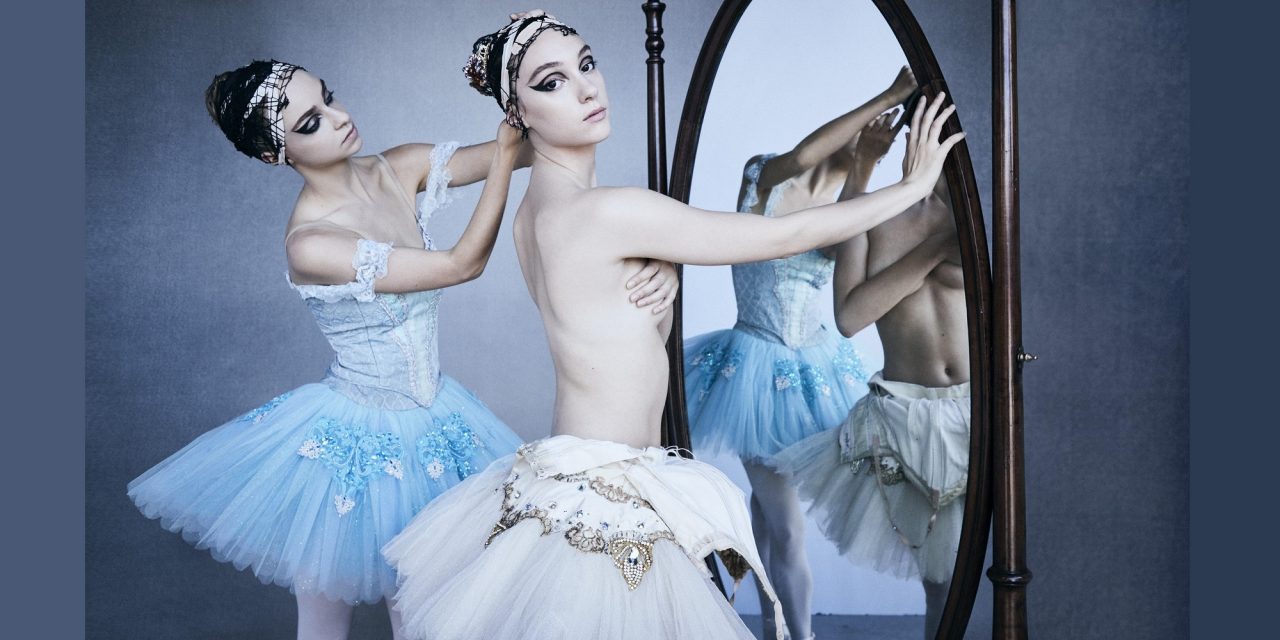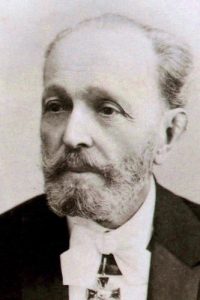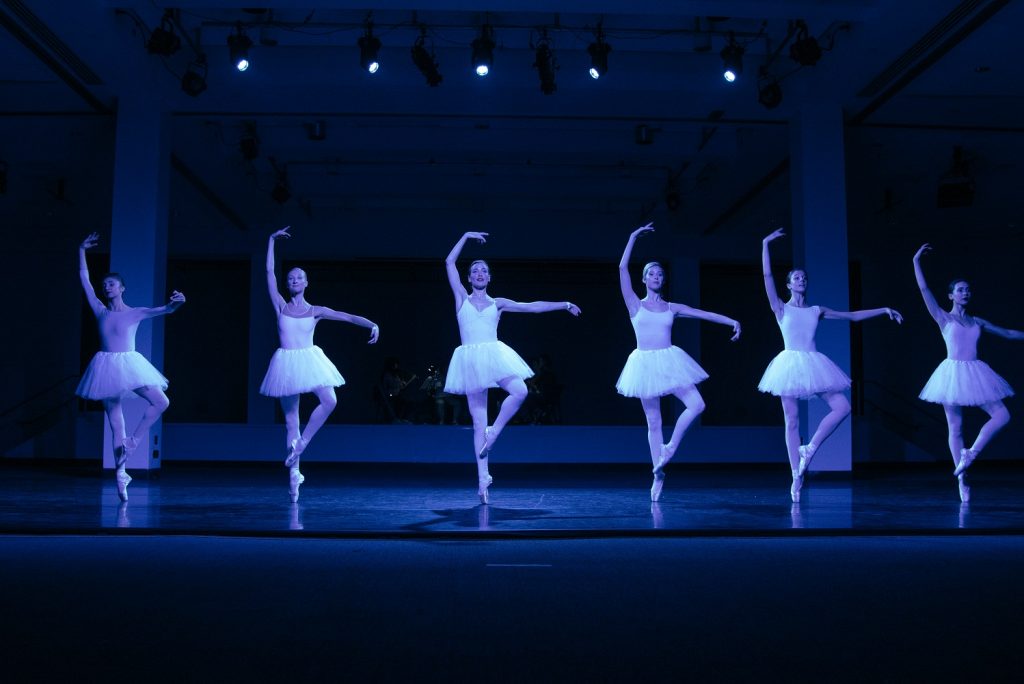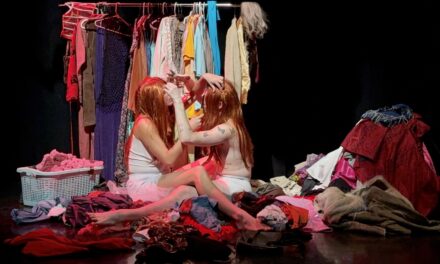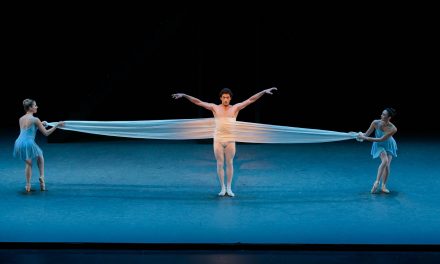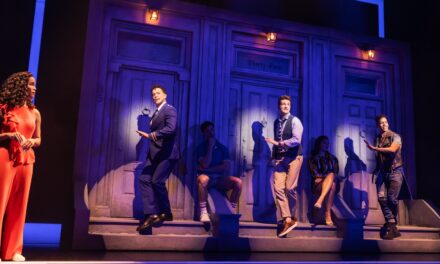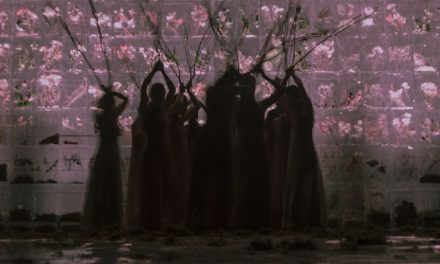We enter a spacious low-lit room in the California Market Center, pillars flanking a black Marley dance floor carefully set for the evening. Spotlights beam down from the high ceilings and are strategically placed over carefully arranged chairs. The warm sound of jazz wafts through the air and accompanies the strolling patrons as they glide from the entrance to the wine bar at the opposite end of the room. Some taking their seats, others quietly chatting. Pianist Morgan Jones begins to wind down his jazz runs, a moment of silence, and the spots suddenly shift to Lincoln Jones, the Artistic Director of American Contemporary Ballet (ACB).
Jones takes the stage and is soon giving the audience a fascinating historical perspective on the program for the evening. It is the reconstruction of Marius Petipa’s original choreography of Raymonda –1898 from notations in the Stepanov Method, carefully deciphered and staged by expert Doug Fullington.
As Jones explained, Petipa’s original choreography had changed down through time. ACB’s reconstruction unveiled a now historical perspective and understanding of the choreographer’s brilliance, along with the relationship of George Balanchine (1904-1983) to Petipa (1818-1910), having done Petipa’s Raymonda as a young boy in St Petersburg, Russia. It was this influence that inspired the great founder of the New York City Ballet to do his Raymonda Variations for NYCB in 1961. Seeing the two choreographer’s work on the same program treated the audience to the genius and similarities of technique and musicality of these two greats.
The Music Director for ACB is Alin Melik-Adamyan, and it was composer Alexander Glazunov whose lilting music carried us through the evening under the harmonious arrangements of James and Kathy McMillen, and the accomplished hand of Melik-Adamyan with six exceptional players who were very much co-stars in this evenings program.
Armed with our new found education, we were ready to enjoy the evening of music, dance and context with Raymonda Variations of the visionary George Balanchine, staged by Zappora Katz, with permission by The George Balanchine Trust, and Grand Pas D’Action and Visions staged by Doug Fullington from notes of the prolific Marius Petipa.
Raymonda Variations began with a Pas de Deux by the lovely and sprightly Rochelle Chang and her accomplished partner, Joshua Brown. At moments Chang fearlessly, and with great aplomb, threw herself into her turns, leans, and lifts, always being supported by her accommodating partner.
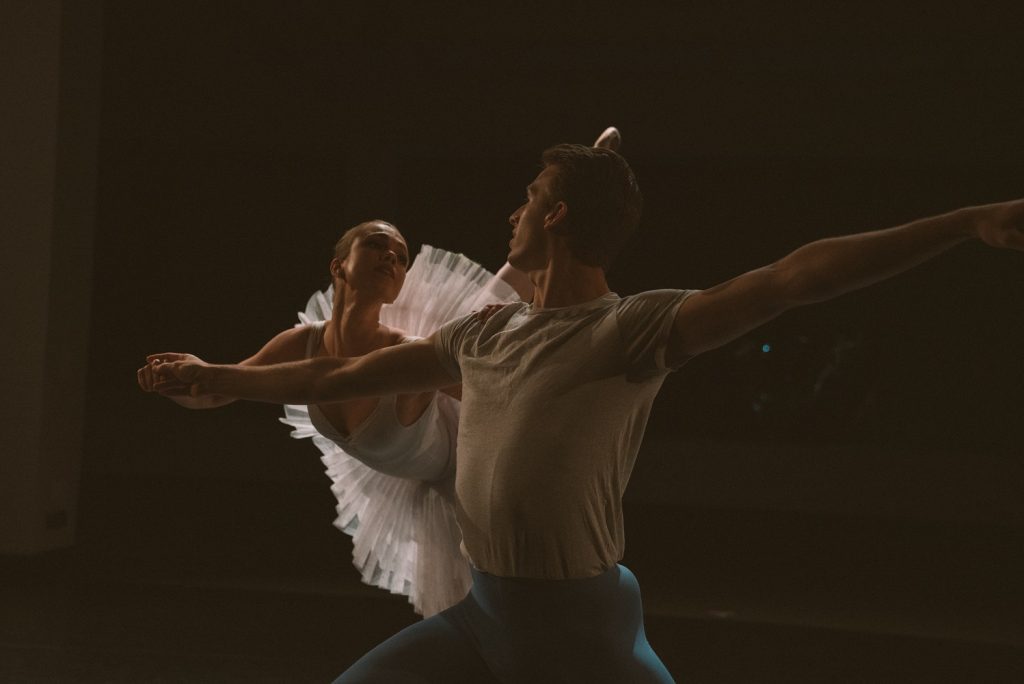
American Contemporary Ballet – Cara Hansvick and Michael Armond in rehearsal – Photo by Anastasia Petukhova
The next five variations were performed by (Variation 1) Sarah Bukowski, (II) Michelle DeAngelis, who showed her nimble footwork quite well, and clearly in the Balanchine style, (V) Cara Hansvick with the variations’ numerous relevés with its need for strength and control, (VI) Cierra Flood clearly showing the Petipa and Balanchine influences with her lovely grand jetes, and (VII) Elise Filo’s splendid strength, control, and confidence, along with her engaging musicality and well placed pirouettes, bridged the Balanchine’s series of Variations to the fiery Pas Classique Hongrois, the spirited yet restrained Hungarian variation, so musically executed by the enchanting and accomplished Madeline Houk.
All the dancers donned costumed in white gossamer skirts and bodices reminiscent of Degas sculpture, “The Little Dancer.” Each slim figure was cinched at the waist with color; blues, oranges, yellows, violets, often repeated subtly in an overskirt. It evoked the 19th century romanticism, designed so simply and tastefully by the gifted costumer, Ruoxuan Li.
We were then treated to the superb musicianship of the quartet, All’Ungherese, From Five Novelettes, Op 15, by Alexander Glazunov (1886), played by first Violinist- Mann-Wen Lo, Second Violinist – Strauss Shi, Viola -Kevin Hsu, , and Cellist – Stella Cho. It was a charming transition from Balanchine to Glazunov, which then set up Petipa’s Grand Pas D’Action. All moving seamlessly from one moment to the next
Grand Pas D’Action included a Pas de Six (dance for Six) Adagio, from Raymonda’s Act Two with Michelle DeAngeles, Brittany Yevoli, Elise Filo, Joshua Brown, Michael Armond, Lincoln Jones. The staging was intricate and surprisingly complicated in its design. A lovely and superb discovery reflecting the choreography of the 19th Century, compared to today’s often “classroom” staging (everyone facing forward as though looking in a mirror). The lines, patterns, themes, variations, the circles, all presented different visual aspects of the work and all delightful to watch. The dancers were able to show challenging technique both as partners and soloists.
The Variations I, II, III, IV, beginning with Michelle DeAngelis proved challenging. Brittany Yevoli appeared comfortable in the lyricism of her piece. Joshua Brown shown himself to not only be a considerate and able partner, but a clean technical dancer, with very good controlled turns and beats, and his presence shown as warmth and openness.
Again, Elise Filo in Variation IV showed her strength and control as she hopped on pointe, executed lovely turns, and her clearly open presence. Miss Filo was followed by the “endurance builder” coda. At this point some of the dancers were showing their fatigue.
Then a welcome hiatus for the dancers while the quartet played Glazunov’s “Valse” from the Five Novelettes, Op 15.
“Visions” From Act One, scene Two of Raymonda was the Tour de Force of an evening of Balanchine and Petipa, which included the entire company. In quick succession, the audience was charmed by the entrance of nine lovely children in pink duplicating the adult dancers. The grand total of performers on the stage amounted to nearly 30. Truly a Grande Finale. The company created an excitement one is not always able to feel when the dancers are seen from the balcony. A filigree of three more variations by Hannah Barr, Sarah Bukowski and Madeline Houk all culminated in the Grande Coda, leading to the final bow.
Afterwards dancers and audience alike gathered in conversation, sipping water or wine and forming friendships thus building future aficionados of Dance, Music and Art. It was a lovely aesthetic evening and is so worth bringing the family and friends to be able to get away from the chaos of L.A, ironically, in the middle of L.A.
For more information on American Contemporary Ballet, click here.
Featured image: American Contemporary Ballet – Photo by Victor Demarchelier

